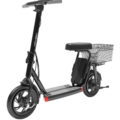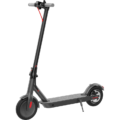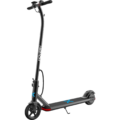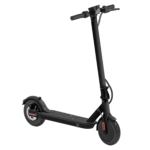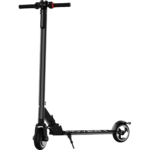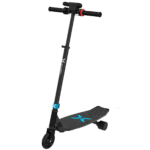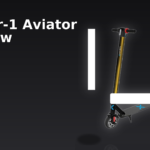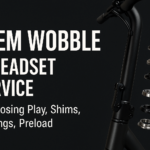- Home
- Scooters
- Electric Scooters
- Hover-1 Jive
Hover-1 Jive
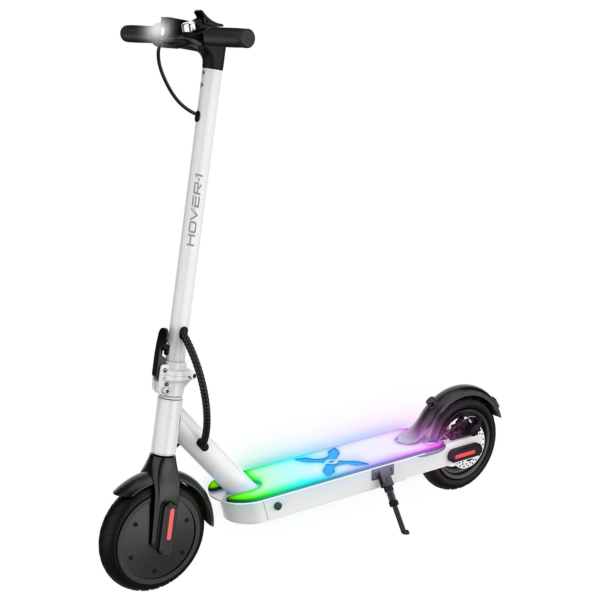


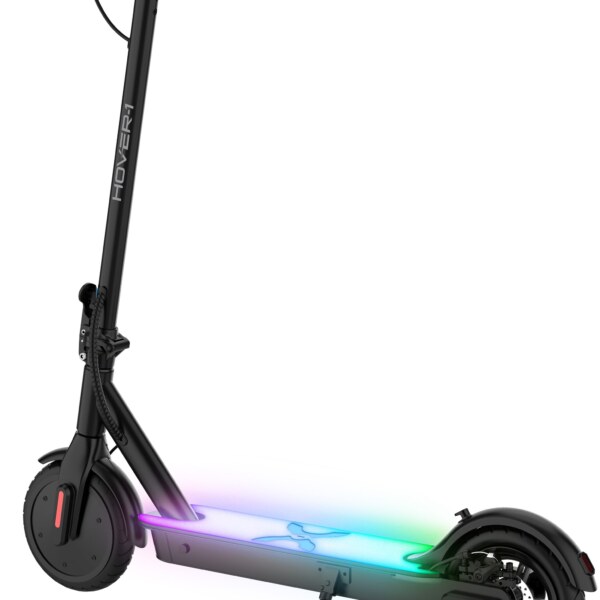
- Battery Range: 16 miles (26 km)
- Top Speed: 16 mph (26 km/h)
- Motor Power: 300 W
- Weight Capacity: 264 lb (120 kg)
- Charging Time: ≈5 h
- Scooter Weight: 26.0 lb (11.8 kg)
PROS
- LED deck lighting
- 8.5″ pneumatic tires
- Rear disc brake
- LCD display with cruise control
- High 264 lb (120 kg) capacity
CONS
- IP rating not listed
- No suspension
- App features not specified
Table of contents
- What Is the Hover-1 Jive?
- How the Hover-1 Jive Works
- Key Specifications
- Design & Build Quality
- Performance Fundamentals
- Battery, Range & Efficiency
- Ride Quality & Comfort
- Braking & Safety Features
- Portability & Daily Usability
- Maintenance & Care
- Weather & Seasonal Considerations
- Hover-1 Jive vs Alternatives
- Who the Hover-1 Jive Is (and Isn’t) For
- FAQs
- Glossary
- Final Thoughts
The Hover-1 Jive is a compact, beginner-friendly electric scooter built for short commutes and campus rides. It mixes an easy one-step fold with a simple cockpit and a smooth-rolling pneumatic tire setup. Because it aims for approachable performance rather than drama, the Hover-1 Jive suits first-time riders, students, and last-mile travelers who want predictable handling, modest speed, and low maintenance.
What Is the Hover-1 Jive?
The Hover-1 Jive is a lightweight, 36-volt, single-motor e-scooter with 8.5-inch air-filled tires and a rear mechanical disc brake. It targets everyday travel across flat or gently rolling streets. You get a 300-watt brushless hub motor, a 6 Ah battery, and a top speed up to 16 mph (25 km/h). Range is rated up to 16 miles (25 km) under ideal conditions. The deck carries a color-changing LED underglow for visibility and some style, while the stem folds quickly for buses, trunks, and stairwells.
Although it’s compact, the chassis supports riders up to 264 lb (120 kg). The cockpit stays clean: throttle on the right, brake lever on the left, bell, and a bright LED display that shows speed, battery, mode, and indicators for cruise and lights. Because it keeps controls simple and weight manageable, the Hover-1 Jive remains practical for daily carry and short hops.
How the Hover-1 Jive Works
At its core, an electric scooter is a rolling electrical system. The Hover-1 Jive keeps that system simple.
Motor. A 300 W brushless hub motor sits inside the rear wheel. Think of it like a compact, sealed electric fan motor tugging you forward. Because it’s brushless, it runs quietly and with little maintenance.
Controller. The controller acts as the scooter’s “brain.” It meters battery power to the motor based on your throttle input, protects against overloads, and coordinates features like cruise control and high-speed mode.
Battery. A 36 V, 6 Ah lithium-ion pack stores energy. Lithium cells deliver steady voltage and decent energy density. Consequently, you get reliable commuting range for a small chassis. Charge time is up to about five hours from near empty.
Throttle. A thumb throttle sends the controller your request for speed. A steady thumb equals steady output. For longer paths, the built-in cruise control can maintain speed and reduce hand fatigue.
Brakes. The scooter uses a handle-activated rear mechanical disc. Because it’s cable-driven, it’s easy to inspect and adjust. The rear light doubles as a brake light to signal slowing.
Altogether, these pieces deliver a predictable start, a stable cruise, and controlled stops. Because the layout is familiar, most riders feel at home by the end of the first ride.
Key Specifications
Below are the official core details, grouped for quick scanning and for comparing to other commuter models. Values are shown in both imperial and metric units where relevant.
General
| Item | Detail |
|---|---|
| Model | H1-JVE |
| Rider Weight Limit | 264 lb (120 kg) |
| Minimum Rider Weight | 44 lb (20 kg) |
| Recommended Minimum Age | 16+ |
| Intended Use | Urban commuting, campus rides, last-mile travel |
Performance & Power
| Item | Detail |
|---|---|
| Motor | 300 W brushless rear-hub |
| Top Speed | Up to 16 mph (25 km/h) |
| Claimed Incline | Up to ~15° |
| Tires | 8.5-inch (216 mm) pneumatic, front and rear |
Battery, Charging & Electrical
| Item | Detail |
|---|---|
| System Voltage | 36 V |
| Battery Capacity | 6 Ah (≈ 216 Wh) |
| Rated Range | Up to 16 miles (25 km) |
| Charge Time | Up to ~5 hours |
| Charger Input | 100–240 V AC, 50/60 Hz |
| Display | LED dashboard (speed, battery, mode, headlight, cruise) |
| Lighting | Front headlight, rear brake light, color-changing deck LEDs |
Build & Dimensions
| Item | Detail |
|---|---|
| Net Weight | 26.0 lb (11.8 kg) |
| Unfolded Size | 41.7 × 16.9 × 43.2 in (106 × 43 × 109.8 cm) |
| Folded Size | 41.7 × 16.9 × 18.8 in (106 × 43 × 47.8 cm) |
| Frame | Alloy stem and deck, integrated kickstand |
| Fold Mechanism | One-step latch with hook |
Safety & Control
| Item | Detail |
|---|---|
| Braking | Rear mechanical disc, lever-actuated |
| Bell | Included |
| Kick-to-Start | Yes |
| IP Rating | Not specified; avoid water immersion and heavy rain |
| Reflectors | Deck/stem reflectivity varies by production batch |
Features & Extras
| Item | Detail |
|---|---|
| Cruise Control | Yes (toggle on ride) |
| Ride Modes | Includes a high-speed mode |
| Underglow | Color-changing LED deck lights |
| App Connectivity | Not specified / none |
Warranty & Compliance
| Item | Detail |
|---|---|
| Warranty | 1-year limited parts and labor (manufacturer defects only) |
| Compliance | Includes FCC statement; follow local riding laws |
Note: Manufacturer range and speed reflect ideal conditions. Real-world results vary with rider weight, terrain, temperature, and maintenance.
Design & Build Quality
The Hover-1 Jive favors simplicity. The frame uses a rigid alloy stem and a compact deck with a grippy surface. Because the battery mounts within the deck, the center of mass stays low. That helps stability at commuting speeds. The 8.5-inch air-filled tires cushion vibrations from joints, pebbles, and expansion cracks far better than solid rubber. As a result, the deck stays calmer and your hands feel less buzz through the bars.
Fit and finish are consistent for this class. The folding joint locks with a straightforward latch, and the handlebar kit bolts on securely. The cable routing is clean along the stem, with protective sleeving where lines might rub. The rear brake caliper is easy to reach, which simplifies pad alignment and cable tensioning. Because the scooter includes a real brake light and under-deck LEDs, you get both function and visibility.
The LED dashboard is bright enough to read in daylight. It places speed at center, battery bars at a glance, and obvious icons for cruise, headlight, and mode. The bell is within thumb reach, and the throttle action is light but positive. Although the Jive is not a heavy-duty chassis, the core hardware feels dependable when kept within the weight limit and used on smoother streets.
Performance Fundamentals
Acceleration feel. With 300 watts on tap, launches are gentle and predictable. Because it’s kick-to-start, the first push brings the motor in smoothly. Throttle response is progressive rather than snappy, which suits new riders and busy bike lanes. From a walking pace, it climbs to cruising speed without drama.
Cruising stability. The low deck and pneumatic tires deliver calm straight-line behavior. At about 12–16 mph (19–25 km/h), it tracks cleanly if your tire pressures are set correctly. Stem flex remains modest for this class. Because there’s no front suspension, tire pressure and road choice matter. Keep pressures within spec and the ride stays composed.
Hill-climb behavior. On short urban rises around 7–10% grade, the Hover-1 Jive will slow yet continue to pull if you carry momentum. Heavier riders should expect a more noticeable drop in speed, especially on longer ramps or rough surfaces. Starting on steep grades demands a push first, then a steady throttle. Because the motor is in the rear, traction holds up well on dry pavement.
Battery, Range & Efficiency
The 36 V, 6 Ah pack stores roughly 216 Wh of energy. In practical terms, that’s enough for short commutes, quick errands, and multi-stop days when you can top up. In mild weather with a 165 lb (75 kg) rider on mostly flat roads, many riders will see a comfortable single-digit mile trip with charge to spare. Because range depends on variables, plan conservatively.
What affects range? Rider mass, average speed, tire pressure, temperature, wind, and hills. Colder air increases rolling and aerodynamic drag and reduces battery output. Underinflated tires add rolling resistance. Stop-and-go traffic uses more watt-hours per mile than steady cruising.
Charging best practices. Aim to finish charging close to your departure time when feasible. Store the scooter between 50–86 °F (10–30 °C) whenever possible. Avoid deep discharges. Because the pack is lithium-ion, occasional top-ups are fine. If you plan to store the scooter, leave the battery around half charged and check it monthly.
Efficiency tips. Keep tires at the recommended pressure (the spec lists ~340 kPa). Use cruise control on longer, flatter stretches to smooth throttle input. Choose routes that avoid repeated hard stops and steep climbs. Because a smooth, steady pace conserves energy, it also helps the motor run cooler.
Ride Quality & Comfort
The air-filled 8.5-inch tires are your primary suspension. They provide real compliance compared to honeycomb or solid tires. With proper pressures, the Jive glides over pavement seams without jarring your knees. Because the deck sits low, you feel planted in turns. Handlebars are a practical width for threading around parked cars and bollards.
Noise and vibration remain low. The brushless motor hums quietly, and there is minimal drivetrain harshness. On rougher pavement, you will feel more chatter at the bar due to the rigid fork, but it stays manageable if you slow a bit. Because rider stance affects comfort, place your front foot roughly diagonal and keep your weight centered over the deck. Slight knee bend absorbs bumps and improves steering feedback.
Braking & Safety Features
The Hover-1 Jive uses a rear mechanical disc brake. Bite builds steadily as you pull the lever. For best control, apply the brake with a smooth squeeze rather than a grab, then shift weight rearward as speed drops. Because the rear tire carries more load on level ground, rear-only braking remains stable at commuter speeds. In wet conditions, braking distances increase, so slow earlier and maintain a straight line where possible.
Lighting covers both seeing and being seen. The front LED headlight helps with visibility to others at dusk, while the rear light brightens under braking. The color-changing deck LEDs add conspicuity from the sides, which helps at intersections. Reflectors may vary by batch, so consider adding stick-on reflectives if your riding includes early morning or evening.
The brand does not publish an IP rating for this model. Therefore, avoid deep puddles, pressure washing, and heavy rain. Wipe the scooter dry after splashes and keep the charge port completely dry before charging.
Portability & Daily Usability
At 26 lb (11.8 kg), the Hover-1 Jive is easy for most adults to carry up a flight of stairs or lift into a trunk. The one-step fold saves time at transit doors. Once folded, the package measures 41.7 × 16.9 × 18.8 in (106 × 43 × 47.8 cm), which fits in car trunks and under many office desks. Because the folded height is short, it stores neatly in apartment closets.
The kickstand deploys quickly and keeps the deck level. The dashboard is clear, and the mode toggle is intuitive. Cruise control reduces thumb fatigue on longer paths, while the bell adds a polite alert in shared spaces. For security, bring a compact U-lock or a hardened folding lock and anchor through the rear wheel and frame where possible. Always remove the charger at home; never leave it plugged into the scooter unattended overnight.
Maintenance & Care
A simple scooter thrives on simple care. Because the Hover-1 Jive uses pneumatic tires and a cable-pull disc, most upkeep is basic.
Weekly quick checks (2–3 minutes).
- Inspect tire tread and sidewalls; remove embedded debris.
- Verify tire pressure; set near the recommended value listed in the manual.
- Squeeze the brake lever; ensure firm bite and smooth return.
- Check latch play at the folding joint; tighten if needed.
Monthly tune-up (10 minutes).
- Examine brake pads and rotor alignment; center the caliper if you hear rub.
- Check all fasteners on the stem clamp, handlebar, and fenders; snug to spec.
- Clean the deck and fork with a damp cloth; avoid spraying water into bearings.
- Inspect cables and housing; replace frayed ends.
Battery habits.
- Keep the battery between ~20% and 80% for day-to-day use when convenient.
- Store at moderate temperature and partial charge if idle for weeks.
- After wet rides, let the scooter dry fully before charging.
Because small adjustments prevent big problems, a regular routine keeps braking crisp and range consistent.
Weather & Seasonal Considerations
Rain. With no published IP rating, treat water carefully. Light splashes at low speed may happen in real life, yet you should avoid heavy rain, standing water, and direct hose spray. Dry the scooter afterward and keep the charge port sealed.
Heat. High temperatures reduce battery life and can soften tire rubber. Therefore, do not leave the scooter in a hot car or in direct midday sun for hours. Let it cool before charging.
Cold. Lithium-ion output falls in the cold. Expect reduced range below ~50 °F (10 °C) and significantly lower range near freezing. Inflate tires to the proper pressure; cold air reduces PSI.
Traction. Painted lines, metal plates, and wet leaves become slick. Slow down, keep inputs smooth, and brake earlier. Because the Jive is rear-drive, it maintains traction reasonably well on dry pavement; however, be extra gentle on wet starts.
Hover-1 Jive vs Alternatives
Within the commuter class, options tend to separate by three priorities: portability, comfort, and power.
When the Jive excels. If you value a low carry weight, a truly quick fold, and the ride comfort of pneumatic tires, the Hover-1 Jive lands in a sweet spot. It’s light enough for stairs, stable at typical city speeds, and more forgiving over rough patches than solid-tire rivals. Because the deck LEDs and brake light add visibility, it’s a friendly choice for campus and neighborhood trips. Prefer a similar entry-level ride from the same brand? See the Hover-1 Alpha for a comparable package with a slightly larger frame.
Where bigger scooters lead. Scooters with larger batteries and motors climb steep hills faster and hold speed against headwinds. They also carry more mass and take more space. If your commute includes long 10% grades or you demand 20+ miles (32+ km) of real range, a higher-capacity model suits better.
Where ultra-budget rivals differ. Some cheaper scooters use solid tires to eliminate flats. Although they reduce puncture risk, they ride harsher and can skip on wet paint. The Jive’s pneumatic setup is kinder to hands and knees, especially on older pavement.
Who the Hover-1 Jive Is (and Isn’t) For
Great for:
- Students who split trips between sidewalks, bike lanes, and transit.
- Apartment dwellers who need a compact, light fold for stairs.
- Office commuters with short, flat routes and limited storage.
- First-time riders who want predictable controls and calm handling.
Not ideal for:
- Riders facing frequent steep hills or long, high-speed stints.
- Anyone needing long-range daily travel without mid-day charging.
- Heavy off-road use on gravel, dirt, or broken pavement.
Choose the Hover-1 Jive when portability, comfort, and simplicity matter more than outright power.
FAQs
1) How fast does it go, and is that enough for city use?
Top speed is up to 16 mph (25 km/h). For shared paths and bike lanes, that’s plenty for steady commuting when you leave early and ride predictably.
2) What range should I expect in real life?
The rated range is up to 16 miles (25 km). In mixed conditions with stops, hills, and a mid-weight rider, plan for less and keep a margin for the return trip.
3) Does the Hover-1 Jive have cruise control?
Yes. You can enable cruise during a ride to hold a steady pace and reduce thumb fatigue.
4) Is there suspension?
No traditional fork or shock. Comfort comes from the 8.5-inch pneumatic tires and a low deck. Proper tire pressures make a big difference.
5) Can I ride it in the rain?
The brand does not publish an IP rating. Therefore, avoid heavy rain, deep puddles, and pressure washing. Dry the scooter after splashes.
6) What does the brake setup include?
A lever-driven rear mechanical disc with a rear brake light. It delivers predictable, stable stops at commuter speeds.
7) Where can I find a quick Hover-1 Jive overview?
Here. This article compiles the essentials—key features, performance basics, care tips, and core specs—in one place.
Glossary
- Ah (Amp-hour): A measure of battery capacity. Higher Ah means more stored charge.
- Wh (Watt-hour): Battery energy (Voltage × Amp-hours). It predicts range more directly than Ah alone.
- Brushless Motor: An efficient electric motor design with low maintenance and smooth output.
- Controller: The scooter’s electronic “brain” that meters power from the battery to the motor.
- Cruise Control: A function that maintains set speed so you can rest your thumb.
- Deck: The platform you stand on; often houses the battery.
- Kick-to-Start: Safety feature requiring a push before the motor engages.
- Pneumatic Tire: Air-filled tire that cushions bumps and improves grip.
- Regen (Regenerative Braking): Uses the motor to slow and recover some energy. Not specified on this model.
- Stem Flex: Small fore-and-aft movement of the handlebar mast under load.
- IP Rating: Ingress Protection against dust and water. Not published for the Jive.
- UL Listing/Compliance: Safety certification standards for electronics and batteries. Coverage varies by product class.
- Torque: Rotational force from the motor; helps with starts and hills.
- Watt (W): Power unit. Higher watts usually mean stronger acceleration but more energy draw.
- Watt-hours per Mile: Energy used per distance; lower usage means better efficiency.
Final Thoughts
The Hover-1 Jive aims for a clear goal: make everyday trips simple, comfortable, and portable. Because its 26-pound frame folds quickly, you can carry it with one hand and stash it almost anywhere. The 300-watt motor and 36-volt system deliver a calm ride up to 16 mph (25 km/h), while the 8.5-inch pneumatic tires keep your hands happier on rough city blocks. Although it isn’t built for big hills or long highway-style runs, it shines when your routine is short, flat, and crowded with stops. With basic maintenance and sensible charging habits, the Hover-1 Jive can be a steady daily companion.
Specifications
General
| Model The Model specifies the exact version or name of the scooter. It helps identify its unique design, features, and specifications within the manufacturer’s product line. Knowing the model makes it easier to compare options, find compatible accessories, or look up support information. | Jive |
| Brand The Brand identifies the manufacturer or company that designs and produces the scooter. A trusted brand is a sign of quality, reliability, and good customer support. Well-known brands often have higher standards for safety, performance, and after-sales service, giving you more confidence in your purchase. | Hover-1 |
| Release Date The Release Date indicates when the scooter model was officially launched on the market. This helps you know how current the design, technology, and features are. A newer release date often means updated components, improved performance, and the latest safety or smart features. | 17 November 2025 |
| Recommended Age Recommended Age indicates the minimum age range that the scooter is designed for, based on safety, size, and ease of use. Following the recommended age helps ensure that riders can handle the scooter’s speed, weight, and controls comfortably and safely. Always check local laws and use protective gear, especially for younger riders. | +16 |
Performance & Power
| Motor Power (Wattage) What it means: The motor power, measured in watts (W), shows how strong the scooter’s electric motor is. Why it matters: Higher wattage usually means better acceleration, more torque, and improved performance on hills or rough terrain. For example, a 250W motor is good for flat city roads and light riders, while a 500W or 1000W motor provides more power for faster speeds or climbing steep inclines. | 300 W brushless hub motor |
| Top Speed The Top Speed indicates the maximum speed that the scooter can reach under optimal conditions. It’s usually measured on level ground with a fully charged battery and an average rider weight. A higher top speed allows you to travel longer distances faster, but always ensure you ride within legal speed limits and your personal comfort zone for safety. | 16 mph (26 km/h) |
| Battery Capacity Battery Capacity refers to the total amount of energy the scooter’s battery can store, usually measured in ampere-hours (Ah) or watt-hours (Wh). A higher battery capacity means you can ride longer distances on a single charge, reducing the need for frequent recharging. Keep in mind that actual range can vary depending on rider weight, terrain, speed, and weather conditions. | 36 V 6 Ah (216 Wh) |
| Estimated Range per Charge The Estimated Range per Charge indicates the average distance the scooter can travel on a single full battery charge. This range is calculated under optimal conditions, such as flat terrain, moderate speed, and average rider weight. Real-world range may vary depending on riding style, terrain, weather, and load. A longer range means fewer recharges and greater freedom for longer trips. | up to 16 miles (26 km) |
| Hill Climb Ability Hill Climb Ability describes the maximum incline or slope that the scooter can handle while maintaining stable performance. It’s typically expressed as a percentage or in degrees. A higher hill climb rating means the scooter can tackle steeper hills without losing too much speed or power. Actual climbing performance may vary based on rider weight, battery charge, and terrain conditions. | up to 15° |
| Drive System The Drive System refers to how power from the motor is delivered to the wheels. Electric scooters typically use either a hub motor (directly integrated into the wheel) or a chain/belt drive system. A high-quality drive system ensures smooth acceleration, efficient power transfer, and low maintenance. The choice of drive system affects performance, noise level, and overall ride experience. | Not specified |
Charging & Electrical
| Charging Time Charging Time indicates how long it takes to fully recharge the scooter’s battery from empty to 100% using the standard charger provided. Faster charging means less downtime and more time on the road. Actual charging time may vary slightly depending on battery capacity, charger output, and environmental conditions. | Approx. 5 hours |
| Battery Type Battery Type refers to the specific technology used in the scooter’s battery, which affects performance, lifespan, weight, and charging time. Most modern electric scooters use high-quality lithium-ion (Li-ion) batteries because they offer a good balance of energy density, durability, and low maintenance. A reliable battery type ensures consistent power delivery and longer riding ranges. | Lithium-ion pack (BMS not specified) |
| Removable Battery A Removable Battery means the battery pack can be easily detached from the scooter for convenient charging and replacement. This feature allows you to charge the battery separately, swap it with a spare for extended range, or securely store it indoors in extreme weather. Removable batteries add flexibility and make it easier to keep your scooter powered up wherever you are. | Non-removable internal battery |
| Regenerative Braking Regenerative Braking is an energy-saving feature that converts some of the energy normally lost during braking back into battery power. When you slow down or brake, the motor works in reverse to generate electricity, which helps extend the scooter’s range and improves overall efficiency. This system also reduces wear on traditional brake components, leading to lower maintenance over time. | Not specified |
| Lighting Lighting refers to the built-in front and rear lights that enhance visibility and safety when riding in low-light conditions or at night. Good lighting helps you see the road ahead and ensures that other road users can see you. Many scooters include LED headlights, taillights, and sometimes brake lights or side reflectors for added safety and compliance with local traffic regulations. | LED headlight + rear light; color-changing LED deck |
Build & Dimensions
| Scooter Weight Scooter Weight refers to the total weight of the scooter when fully assembled, including the battery. This affects how easy it is to carry, lift, and store the scooter when not in use. A lighter scooter is more portable and convenient for commuting, especially if you need to carry it upstairs or onto public transport. Keep in mind that a sturdy frame and quality components may add to the weight but also contribute to better durability and ride stability. | 26.0 lb (11.8 kg) |
| Maximum Rider Weight Maximum Rider Weight indicates the highest rider weight that the scooter is designed to safely support while maintaining optimal performance and stability. Staying within this limit helps ensure reliable acceleration, braking, and climbing ability, and it protects the frame, suspension, and motor from excessive strain. Exceeding the recommended limit may reduce performance and increase wear on components. | 264 lb (120 kg) |
| Deck Size Deck Size refers to the dimensions of the scooter’s standing platform. A wider and longer deck provides more foot space, allowing you to stand comfortably and adjust your stance while riding. A well-sized deck improves balance and stability, especially on longer rides or at higher speeds. Compact decks, on the other hand, help keep the scooter lightweight and portable. | Slim frame; LED-accent deck |
| Handlebar Height Handlebar Height refers to the distance from the deck to the handlebars, which affects your riding posture and comfort. An appropriate handlebar height helps you maintain good balance, reduces strain on your back and arms, and makes steering more comfortable. Some scooters have adjustable handlebars to fit riders of different heights, while others have a fixed height for a streamlined design. | Fixed |
| Folding Mechanism The Folding Mechanism describes how easily and securely the scooter can be folded for carrying and storage. A well-designed folding system lets you quickly collapse the scooter into a compact size, making it convenient to transport on public transit, store under a desk, or fit into a car trunk. Look for sturdy latches and safety locks to ensure the scooter stays firmly in place when folded or unfolded. | Quick-fold latch |
| Dimensions Folded Dimensions indicate the size of the scooter when it’s fully folded. This measurement shows how much space the scooter will take up when stored or carried, making it easier to check if it will fit in your car trunk, under a desk, or in a closet. Compact folded dimensions are ideal for commuters who need to bring their scooter on public transport or store it in tight spaces. | Folded: 44.9 × 7.7 × 19.3 in (114.0 × 19.6 × 49.0 cm); Unfolded: 44.9 × 19.3 × 44.7 in (114.0 × 49.0 × 113.5 cm) |
| Material Material refers to the primary construction materials used for the scooter’s frame and key components. High-quality materials like aircraft-grade aluminum, reinforced steel, or durable composites provide strength, stability, and a lighter overall weight. A sturdy material ensures the scooter can handle daily wear and tear while maintaining safety and performance. | Aluminum alloy |
Safety & Control
| Brake Type(s) Brake Type(s) describe the braking systems the scooter uses to help you slow down or stop safely. Common brake types include mechanical brakes (like drum or disc brakes), electronic brakes, and foot brakes. Many scooters combine multiple braking systems for added safety and shorter stopping distances. The type and quality of brakes affect your control, especially when riding at higher speeds or on slopes. | Rear disc brake |
| Suspension Suspension refers to the system that absorbs shocks and vibrations while riding, providing a smoother and more comfortable ride over uneven or rough surfaces. Scooters may have front suspension, rear suspension, or dual suspension for better shock absorption and stability. Good suspension helps reduce rider fatigue and improves control, especially when riding on bumpy roads or off-road paths. | None |
| Tire Type Tire Type refers to the kind of tires the scooter uses, which directly affects ride comfort, traction, and maintenance. Common types include solid (airless) tires, pneumatic (air-filled) tires, or hybrid options. Pneumatic tires offer better shock absorption and a smoother ride on rough surfaces, while solid tires are puncture-proof and require less upkeep. The right tire type helps ensure safe handling and a comfortable ride in different conditions. | 8.5″ pneumatic tires |
| Tire Size Tire Size indicates the diameter and width of the scooter’s tires, which affect ride comfort, stability, and how well the scooter handles different terrains. Larger tires generally offer better shock absorption and a smoother ride over bumps and rough surfaces, while smaller tires keep the scooter lighter and more portable. Choosing the right tire size helps ensure a balance between agility and comfort. | 8.5-inch |
| Kickstand The Kickstand is a built-in stand that allows you to park your scooter upright when it’s not in use. A sturdy kickstand keeps the scooter stable and prevents it from tipping over, protecting it from scratches and damage. It also makes storing and accessing your scooter more convenient, whether you’re at home, work, or on the go. | Side kickstand |
| Water Resistance Rating Water Resistance Rating indicates how well the scooter is protected against water and moisture, usually shown as an IP (Ingress Protection) rating. This rating helps you understand whether the scooter can handle light rain, splashes, or wet roads without damage. While most scooters are not fully waterproof, a good water resistance rating adds peace of mind when riding in changing weather conditions. Always avoid deep puddles or submerging the scooter to protect its electrical components. | Not specified |
Features & Extras
| Display/Console The Display (or Console) shows important real-time information about your ride, helping you monitor your scooter’s status at a glance. Typical displays show speed, battery level, distance traveled, and riding mode. Some models also include additional features like Bluetooth connectivity, app integration, or backlighting for better visibility at night. A clear and easy-to-read display enhances safety and convenience on every trip. | LCD display (speed, battery, mode) |
| Ride Modes Ride Modes refer to the different speed and power settings you can choose to match your riding style or road conditions. Common modes include eco for maximum range and energy efficiency, standard for everyday balance, and sport or turbo for higher speed and stronger acceleration. Switching between ride modes allows you to customize performance, conserve battery, and ride safely in various environments. | Not specified |
| Smart App Connectivity Smart App Connectivity lets you pair your scooter with a dedicated mobile app via Bluetooth. Using the app, you can monitor real-time ride stats like speed, battery level, and range, adjust settings such as ride modes or cruise control, lock the scooter for added security, and sometimes receive firmware updates. This feature adds convenience and allows you to personalize your riding experience right from your smartphone. | Not specified |
| Anti-Theft System The Anti-Theft System helps protect your scooter from unauthorized use or theft. This feature can include built-in alarms, electronic motor locks, GPS tracking, or remote locking through a mobile app. A good anti-theft system provides peace of mind when parking your scooter in public spaces, adding an extra layer of security to safeguard your investment. | Not specified |
| Cruise Control Cruise Control allows you to maintain a steady speed without continuously holding the throttle. This feature makes longer rides more comfortable by reducing hand fatigue and providing a smoother, more relaxed riding experience — especially on flat, open roads or bike lanes. For safety, cruise control can usually be easily activated or deactivated while riding. | Yes (cruise control) |
| Accessories Included Accessories Included lists the additional items that come with the scooter to enhance your riding experience and convenience. Common accessories may include a charger, kickstand, bell, lights, phone holder, or carrying strap. These extras add value by making your scooter safer, easier to use, and ready to ride straight out of the box. | Jive scooter, charger, manual |
Warranty & Compliance
| Warranty Period The Warranty Period indicates how long the manufacturer guarantees the scooter against defects in materials and workmanship under normal use. A good warranty provides peace of mind, showing the brand’s confidence in its product quality. Always check what parts are covered, such as the frame, battery, and motor, and follow the maintenance guidelines to keep your warranty valid. | Limited warranty (term not specified; region-dependent) |
| Certifications Certifications confirm that the scooter meets specific safety, quality, and environmental standards set by recognized organizations or regulatory bodies. Common certifications may include CE, RoHS, UL, or other local compliance marks, depending on your region. These certifications ensure that the scooter is manufactured to high standards and is safe and legal to use in your country. | UL 2272 battery compliance (brand standard); region-dependent |


